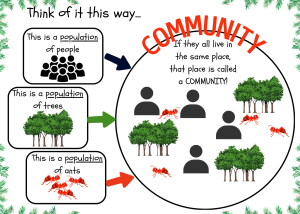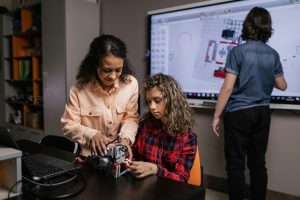Create Lab Activities From Scratch
If you are a middle school science teacher, you know how important labs are to your curriculum. Labs provide students with the opportunity to put what they have learned into practice and to gain experience with science equipment and procedures.
However, creating lab activities from scratch can be a daunting task. In this blog post, we’ll provide you with some tips and resources to help you create middle school science labs that are safe, engaging, and aligned with your standards.
Middle school science labs: why are they important?
Middle school science labs are important because they provide a hands-on opportunity for students to learn about science. By working in the lab, students can develop an understanding of scientific concepts and principles. In addition, labs give students the chance to practice their problem-solving and critical-thinking skills.
Labs also provide a safe environment for students to explore and experiment. With the guidance of a teacher, students can feel comfortable trying new things and making mistakes. This is an essential part of learning science.
Overall, middle school science labs are important because they offer students a chance to learn in a hands-on way, develop an understanding of scientific concepts, and practice their problem-solving skills.
Why create your own science lab activities?
There are many reasons to get creative with your science lab activities. For one, you may be tired of the same old activitites. In some cases, students have done the same activity several years running. Been there, done that! Engaging? I think not.
Maybe, you have a hard time finding suitable activities for your content topics. This is where you get a chance to make up your own.
Creating your own science lab activities also allows you to tailor the lesson to the specific needs and interests of your students. By making the content more relatable and engaging, you’ll be setting them up for success. Not to mention, it’s a great way to get everyone involved and working together – something that’s always beneficial in any learning environment.
So go ahead and get creative with your next science lab! You and your students are sure to benefit from the experience.
What you need to get started
First off, you have to have the topic for investigation. With science curricula being standards driven, that should prove to be an easy task. If you already have something in mind, ask yourself… Does your topic fit in with your standards?
Next, you need a good knowledge of the scientific process. Can you pick out the independent, dependent, and control/ constant variables related to the topic?
Lastly, you will need access to equipment and supplies. This doesn’t have to be fancy. Most labs can be done with beakers, test tubes, racks, balances… Do you have access to basic lab supplies? If not, can you borrow or improvise what is needed?
Making your labs unique
First, look at the objective or problem. Have you narrowed it down enough? (What, specifically, do you want the students to investigate?)
Once you have your main focus, there are several routes you can take to create your own unique science lab activity.
Route A- Are you taking an existing lab and tweaking it to make it more suitable for your students? If so, the skeleton will be there. All that’s needed is for you to modify it to suit your students.
Route B- Have you researched existing labs for ideas? In many cases, you can borrow a little here, a little there, and come up with one of your own making.
Route C- Perhaps, you are starting from scratch. Personally, I like this approach. If that’s the case, building your own lab through the lens of experimental design process is a good choice.
Once you have determined which path to take you can move on to building an outline.
Building your labs from scratch
1-Identify the problem for this lab investigation by looking at the variables. (My eBook on the scientific method will provide you and your students with direction.)
2-See what supplies are on hand. If not, can you borrow or purchase them?
3-Flesh out your lab on the computer (here’s a template).
When designing the lab keep these things in mind:
- Are you providing the problem or question? Will you give them the basic ideas and have them develop their own? Is it open-ended?
- Create a materials list ( or, you may choose not to add it to your template with the intention of students writing it in)
- Provide a clear and concise procedure (If you want your students to write it, keep in mind that this tends to be their hardest task. Middle school students tend to assume anyone reading their steps will understand the process.)
- Set up a data table (Some of you may opt to have students develop it. If time is a factor, having a “premade” data table is invaluable.)
- Will they graph the data or not? You have to provide either the space or resources to do this.
- Conclusion- For the conclusion, come up with a least 3 thought provoking questions for reflection. You might, as a final question, have students look at a real-world scenario related to the labs objective.
Last steps
All that’s left now is to:
- spruce up the document
- gather materials
- run off or have an e-copy to share on lab day
On lab day, unless you have prepped them ahead of time, you can review the concept from their studies, explain the process, set up groups as needed, and let them have at it.
To wrap things up
In order to create a unique and engaging science lab activity, it is important to first come up with an interesting and novel idea. Once you have the general concept in mind, it is important to do some research to make sure that your idea is doable and that it will be engaging for your students. Once you have a plan, it is important to write a clear and concise description of the activity so that your students will be able to understand what they need to do. Finally, if at all possible, test your activity before you implement it in the classroom. That way you can be sure that it will be successful.
Congratulations! You’re now on the road to developing your own distinctive lab activities.
Outline
- Introduction
- Middle school science labs: why are they important?
- Why create a science lab?
- What you need to get started …access to equipment (what supplies will I need? It helps to have a supply of equipment on hand. Nothing fancy, just the usual…test tubes, racks, balances, etc)+topic starting point+good knowledge of scientific process (can you identify variables for a particular problem?) & your curriculum objectives
- Making your labs unique (looking at your objective & problem…the focus of the lab, narrow it down… what specifically do you want students to investigate…I’m not advocating for canned labs…how boring…open-ended labs-yeah…
- Building your labs from scratch (you’ve ID’ed the problem for students to investigate by looking at the variables, you have the supplies on hand, or can get them… now it’s time to flesh out the lab on a computer. Computer- Are you providing the problem for them? are you giving them options? Is it open-ended? create materials list… providing the steps by writing out a clear, concise procedure. Space for data (will they create their own table or will you give them a skeleton to fill in? Will they graph the data or not? For the conclusion, come up with a least 3 thought provoking questions for reflection and to think beyond…maybe, at the end, provide a life scenario that weaves the objective into a situation.
- Last steps (spruce up document, gather materials, run off or have an e-copy to share on lab day/ on lab day, unless you have prepped them ahead of time, review the concept from their studies, explain the process, set up groups as needed, and let them have at it.)
- To wrap things up
While you’re grabbing freebies, you don’t want to miss this free guide.
4 Keys for Creating an Outstanding Lab Experience!








